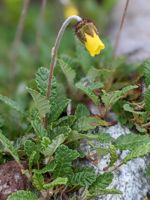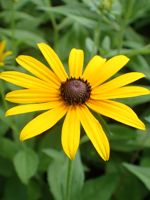Mon-Fri 9am - 5pm Mountain time
Black-Eyed Susan vs Yellow Mountain Avens
Dryas drummondii
Rudbeckia hirta
CUSTOM GROW
NOT AVAILABLE THIS SEASON - MIGHT RETURN
Yellow Mountain Avens is a native perennial wildflower with bright yellow buttercup-like blooms. The nectar-rich flowers attract a variety of pollinators, including bees and butterflies. By thriving at higher elevations, it helps sustain pollinator populations and provides one of the earliest sources of nectar and pollen in alpine habitats. After the blooms fade, the plant produces silky seed heads that begin as upright, compact tufts and gradually expand into rounded, fluffy clusters, adding texture and interest to the landscape.
As a nitrogen-fixing plant, Yellow Mountain Avens enriches soil fertility and supports the growth of surrounding vegetation. It forms dense, spreading mats of evergreen foliage that act as a groundcover and help stabilize soil. Often among the first species to establish in disturbed alpine sites such as glacial outwash or landslides, it is well-suited for alpine revegetation, erosion control, naturalization, and ecological restoration projects in harsh, rocky environments.
Black-Eyed Susan is a striking native wildflower known for its bright yellow, daisy-like flowers with dark center disks. With deadheading, the plant can bloom for an extended period, from mid-summer to early fall. These cheerful flowers attract a variety of pollinators, including bees and butterflies. Adding to its ecological value, the plant also acts as a host for the Wavy-Lined Emerald Moth (Synchlora aerata) and the Silvery Checkerspot (Chlosyne nycteis) butterfly.
While it is typically a short-lived perennial or biennial, the plant freely self-seeds. This allows it to persist in the landscape, particularly in natural areas where it can spread and establish itself. This plant is drought-tolerant, salt-tolerant, and deer and rabbit-resistant, making it ideal for challenging environments. The Black-Eyed Susan is well suited to wildflower gardens, pollinator gardens, as well as slopes, banks, and naturalized areas.

